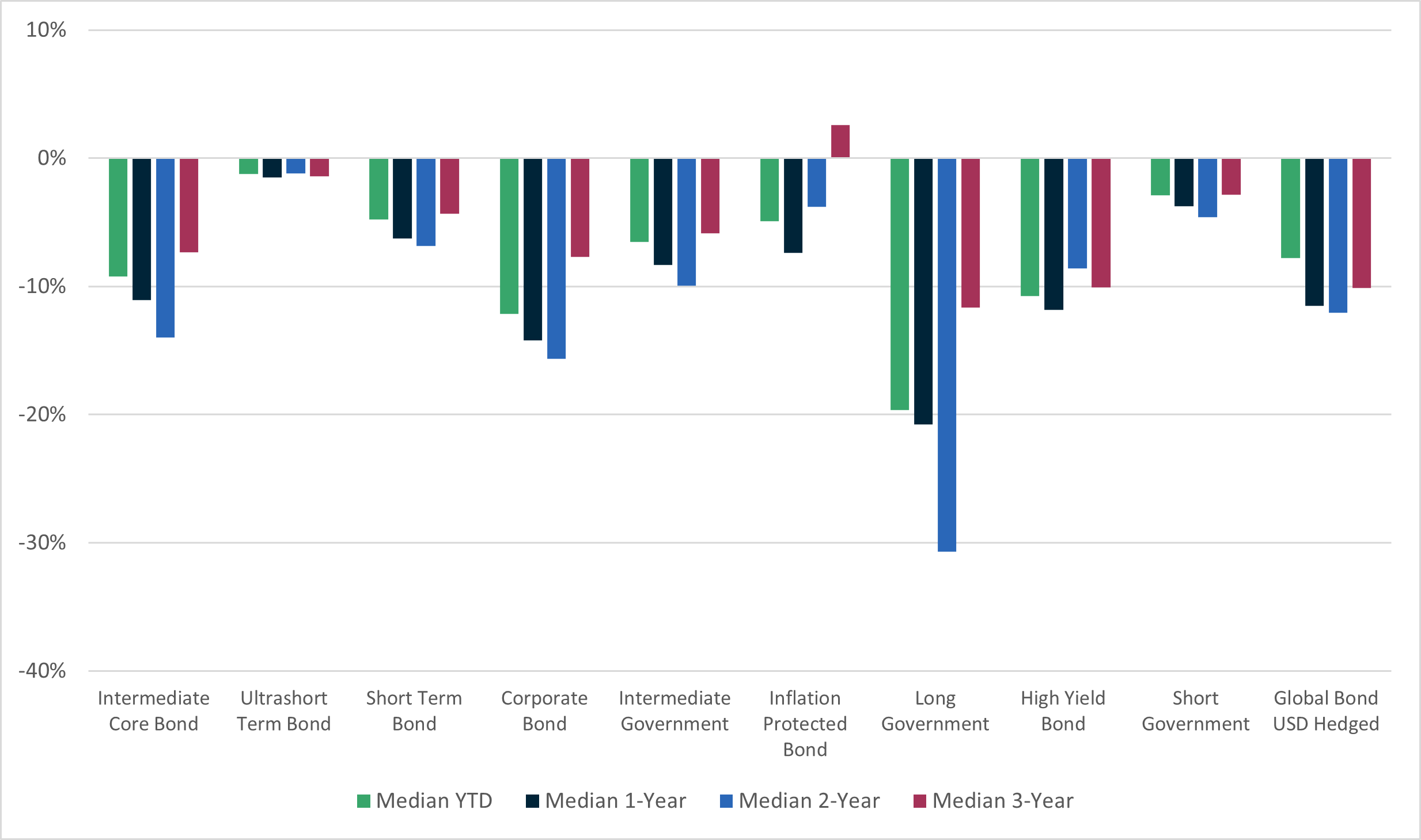We first touched upon the importance of tax loss harvesting in a blog post back in April. A critical point to remember from that post is that a tax management strategy, which should include tax loss harvesting, is a vital tool in every investor’s tool kit. Opportunities for tax loss harvesting should be regularly reviewed in every taxable portfolio year-round, not just when taxes are top of mind in April and December. In fact, a recent study found that a tax loss harvesting strategy could deliver over 100 bps of alpha per year over a simple buy-and-hold strategy1.
First, a quick refresher on tax loss harvesting: tax loss harvesting is the act of selling a security at a loss and using that loss to offset taxable gains (realized gains, dividends, capital gains distributions) elsewhere in your portfolio to help reduce taxes. The investor can then reinvest in a different security that may provide a similar risk and return exposure for their portfolio. In this way, the investor can reap benefits of realizing a tax loss while remaining invested for the long run.
In April we commented on the historically dreadful start to the year that the bond market was experiencing, with the benchmark Bloomberg US Aggregate Bond Index down approximately 6% through the end of Q1. Unfortunately, the woes have continued for the bond market as inflation stormed higher forcing the Fed to hike interest rates 200 bps from May through July, with more hikes potentially on the way. Even with a rally in July, bonds are lower than the levels hit back in March, with the Bloomberg US Aggregate Bond Index now down over 8% YTD through 7/31.
Revisiting our bond ETF performance chart, the picture is, not surprisingly, even uglier than it was in April, and the story remains the same: if you bought a bond ETF at any point in the last 3 years, you’re likely sitting on a price return loss right now. Of the top 10 bond ETF categories by assets, which account for over $1 trillion in taxable bond ETF AUM and 80% of the taxable bond ETF market, the median YTD, 1-year, and 2-year price return is negative for EVERY one of those categories and only the Inflation Protected Bond has a positive 3-year number (see Figure 1). Furthermore, of the 222 eligible ETFs in those 10 categories that have been listed for at least a year, only 6 have a positive price return (5 ultrashort bond ETFs, 1 inflation protected bond ETF) over the previous 12 months through July. The median 1-year and 2-year price returns for the largest category, Intermediate Core Bond, are both down over -10%.
Figure 1: Top 10 Bond ETF Categories – Median Fund Price Return through July 31st, 2022
 Bond ETF investors should not only re-evaluate their holdings during these unprecedented times, but also look for opportunities to harvest losses where possible. When investors do this, however, they have to consider whether or not they can successfully reinvest their money in an ETF that will provide a similar risk profile and objective as the ETF they sold. That’s where Build comes in. Investors seeking a replacement ETF for a core bond allocation may consider The Build Bond Innovation ETF (ticker: BFIX, see www.BFIX.fund for more information).
BFIX is a short-to-moderate duration core bond fund designed for a modern global environment defined by historically low interest rates and debt-dependent economic growth. Despite the recent surge in inflation and bond yields, Build has conviction that in the long run bond yields will be forced downwards as the global economy continues to rely on debt for growth. The fund seeks to outperform traditional bond strategies under the continuation of low yields and/or rising prices in equity markets. The ETF takes the following approach:
Bond ETF investors should not only re-evaluate their holdings during these unprecedented times, but also look for opportunities to harvest losses where possible. When investors do this, however, they have to consider whether or not they can successfully reinvest their money in an ETF that will provide a similar risk profile and objective as the ETF they sold. That’s where Build comes in. Investors seeking a replacement ETF for a core bond allocation may consider The Build Bond Innovation ETF (ticker: BFIX, see www.BFIX.fund for more information).
BFIX is a short-to-moderate duration core bond fund designed for a modern global environment defined by historically low interest rates and debt-dependent economic growth. Despite the recent surge in inflation and bond yields, Build has conviction that in the long run bond yields will be forced downwards as the global economy continues to rely on debt for growth. The fund seeks to outperform traditional bond strategies under the continuation of low yields and/or rising prices in equity markets. The ETF takes the following approach:
 Bond ETF investors should not only re-evaluate their holdings during these unprecedented times, but also look for opportunities to harvest losses where possible. When investors do this, however, they have to consider whether or not they can successfully reinvest their money in an ETF that will provide a similar risk profile and objective as the ETF they sold. That’s where Build comes in. Investors seeking a replacement ETF for a core bond allocation may consider The Build Bond Innovation ETF (ticker: BFIX, see www.BFIX.fund for more information).
BFIX is a short-to-moderate duration core bond fund designed for a modern global environment defined by historically low interest rates and debt-dependent economic growth. Despite the recent surge in inflation and bond yields, Build has conviction that in the long run bond yields will be forced downwards as the global economy continues to rely on debt for growth. The fund seeks to outperform traditional bond strategies under the continuation of low yields and/or rising prices in equity markets. The ETF takes the following approach:
Bond ETF investors should not only re-evaluate their holdings during these unprecedented times, but also look for opportunities to harvest losses where possible. When investors do this, however, they have to consider whether or not they can successfully reinvest their money in an ETF that will provide a similar risk profile and objective as the ETF they sold. That’s where Build comes in. Investors seeking a replacement ETF for a core bond allocation may consider The Build Bond Innovation ETF (ticker: BFIX, see www.BFIX.fund for more information).
BFIX is a short-to-moderate duration core bond fund designed for a modern global environment defined by historically low interest rates and debt-dependent economic growth. Despite the recent surge in inflation and bond yields, Build has conviction that in the long run bond yields will be forced downwards as the global economy continues to rely on debt for growth. The fund seeks to outperform traditional bond strategies under the continuation of low yields and/or rising prices in equity markets. The ETF takes the following approach:
- Defense First. The ETF typically has 90% to 95% of its holdings in investment grade fixed income*, with the intent of providing downside risk management over the long-term. It seeks to maintain a moderate duration profile and requires investment grade credit quality in its bond holdings.
- Upside Exposure Using Options. The ETF invests the remainder of its assets in a rules-based call option overlay tied to the upside performance of the S&P 500 Index.


